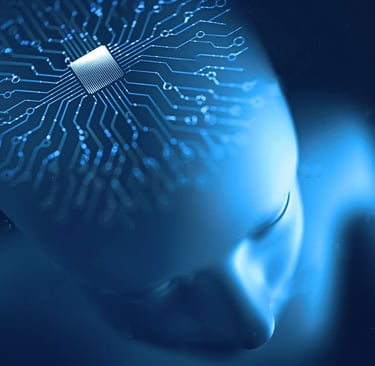items chosen one by one so you have the best option and save money on amazon (Links in articles)
Neurochips in Humans: The New Tech Frontier Has Already Begun in 2025
In 2025, the line between humans and machines is becoming blurrier than ever — and neurochip implants are at the heart of this transformation. Once a concept of science fiction, brain-computer interfaces (BCIs) are now being tested, refined, and, in some cases, commercially deployed. Tech giants and neuroscience startups are leading the charge toward a future where the brain can communicate directly with machines — without a screen, a keyboard, or even words. But what does this mean for consumers, patients, and the future of human potential? Let’s dive into the most disruptive technology of 2025 — and why it’s not just coming, it’s already here.
5/15/20252 min leer


🧠 What Are Neurochips?
Neurochips, also known as brain-computer interface (BCI) implants, are small, high-tech devices inserted into or placed near the brain. Their main goal? Translate neural activity into digital signals.
In simple terms: your thoughts can now interact with computers. No mouse, no typing — just intent.
These chips can:
Enable paralyzed patients to control prosthetics or computers
Allow communication for those with severe speech or motor impairments
Potentially boost memory, focus, and cognitive function in the future
The applications range from medical to military, and from consumer tech to AI integration.
🧪 Who's Leading the Neurochip Revolution?
In 2025, several companies are at the forefront of brain tech:
🔹 Neuralink (Elon Musk)
Neuralink has already conducted successful human trials with its brain chip, allowing test subjects to control devices with their thoughts. The chip is minimally invasive and connects wirelessly to apps and computers.
🔹 Synchron
Unlike Neuralink’s surgical approach, Synchron uses a minimally invasive catheter-based implant inserted via blood vessels. In 2024, it became the first company to receive FDA breakthrough designation for a permanently implanted BCI.
🔹 Blackrock Neurotech
With over 30 human patients already equipped with its tech, Blackrock focuses on medical applications for restoring movement and communication.
⚙️ How Do Brain Chips Work?
These implants consist of:
Electrodes that detect brain activity
Processing units that convert neural signals into code
Wireless transmitters that connect to external devices
Once implanted, they interpret electrical impulses in specific brain regions and translate them into actions — such as moving a cursor, typing a word, or eventually driving a car with thought alone.
In the near future, integration with AI assistants may make this interaction seamless and two-way — where not only do you send commands, but receive digital information back, directly into your mind.
🔍 Real-World Applications in 2025
Here’s how neurochips are already impacting real lives:
Medical Recovery: Patients with ALS and spinal cord injuries are using BCIs to communicate and regain independence.
Cognitive Enhancement: Military and research labs are exploring implants that could enhance focus, reduce fatigue, and even improve memory recall.
Hands-Free Tech: Imagine controlling smart home devices, phones, or even your car without lifting a finger — this is no longer science fiction.
And yes, even video game interfaces controlled by thought are under development.
🔐 Ethical and Security Concerns
The rise of neurochips brings as many questions as it does breakthroughs:
Data privacy: Who owns your brain data?
Hacking risks: Could malicious actors control or read your neural inputs?
Mental health: How will brain-machine integration affect human psychology long term?
Tech leaders are working with regulators and bioethics boards to create safe, transparent standards, but these concerns are far from resolved.
📈 The Market Opportunity
According to industry analysts, the brain-computer interface market is projected to surpass $6 billion by 2030, with medical, military, and consumer sectors driving rapid adoption.
Major platforms like Amazon and Apple are already investing in brain-integrated wearable technology, and we may soon see accessories that connect to implanted chips — offering “neural extensions” to daily life.
🚀 What’s Next?
We’re approaching an era where:
You’ll send emails with your thoughts
Learn languages via direct brain downloads
Control devices faster than you could type or speak
The next iPhone moment may not be a phone — it could be a neurochip implant.
🧲 Final Thoughts: Should You Be Excited or Worried?
Like all transformative technology, neurochips are both a promise and a challenge. For now, the benefits are most visible in medical use, but the horizon of applications is vast.
Whether you're a tech enthusiast, health futurist, or digital entrepreneur, the brain-tech revolution has already begun — and by 2030, it may be as common as smartphones are today.
👉 Ready to Explore the Future?
Check out the most innovative neuro-tech gadgets of 2025 available on Amazon — from brainwave monitors to AI-powered wearable headsets: